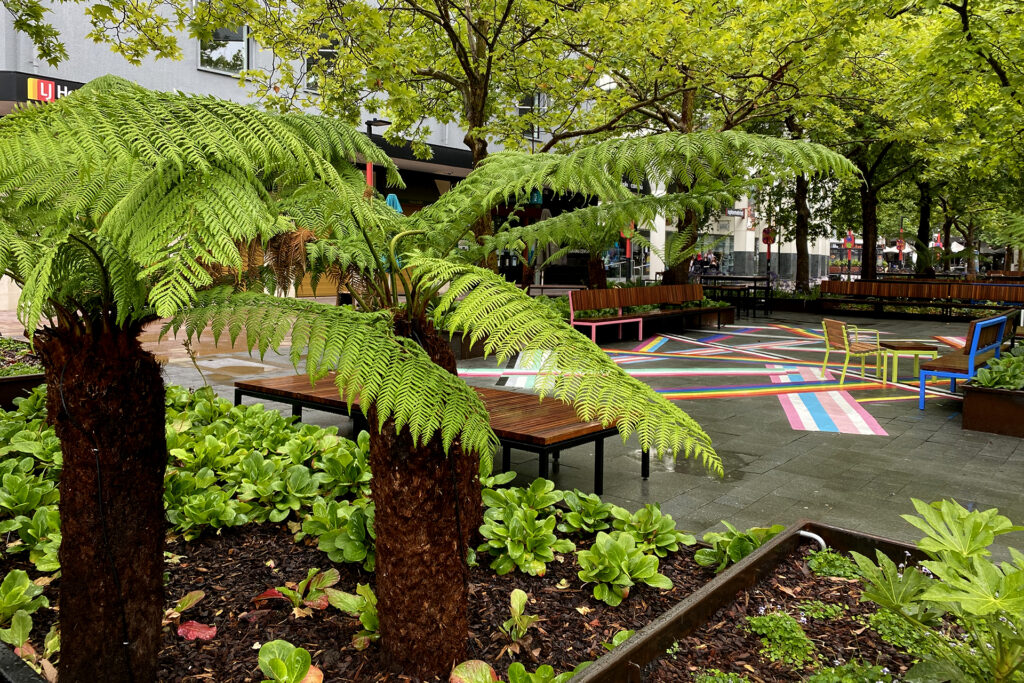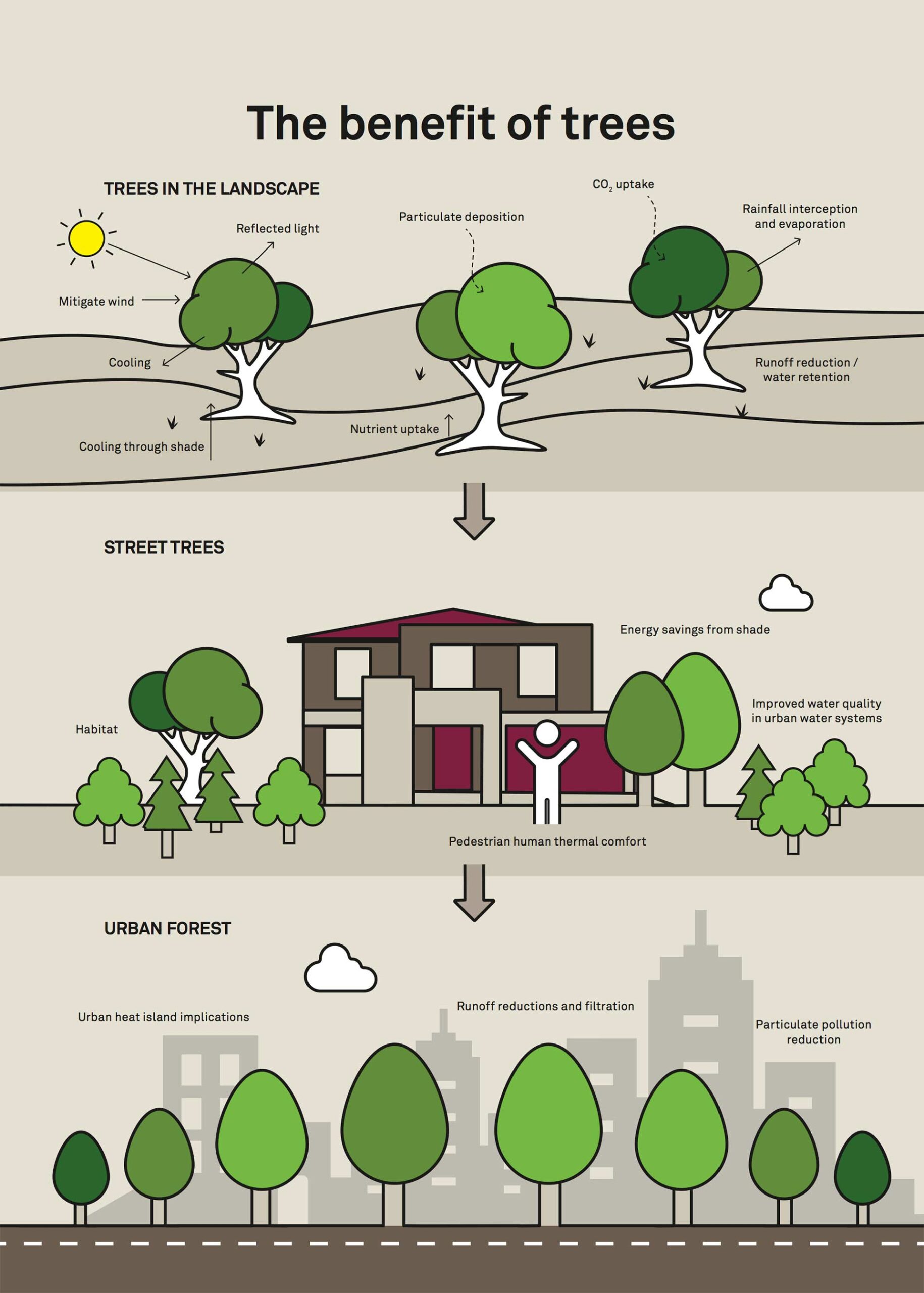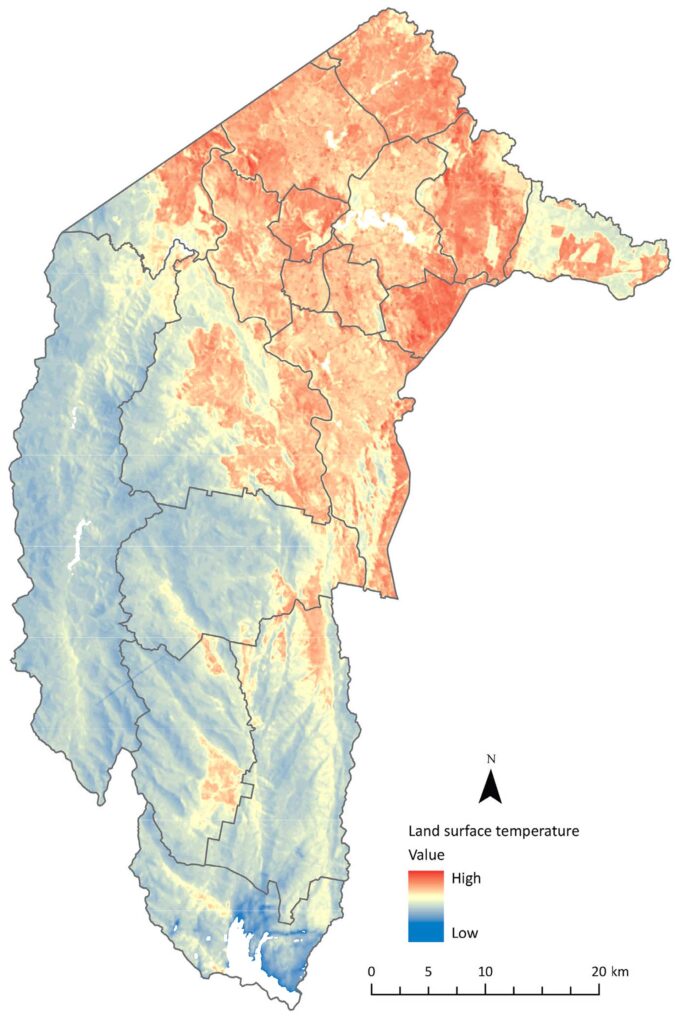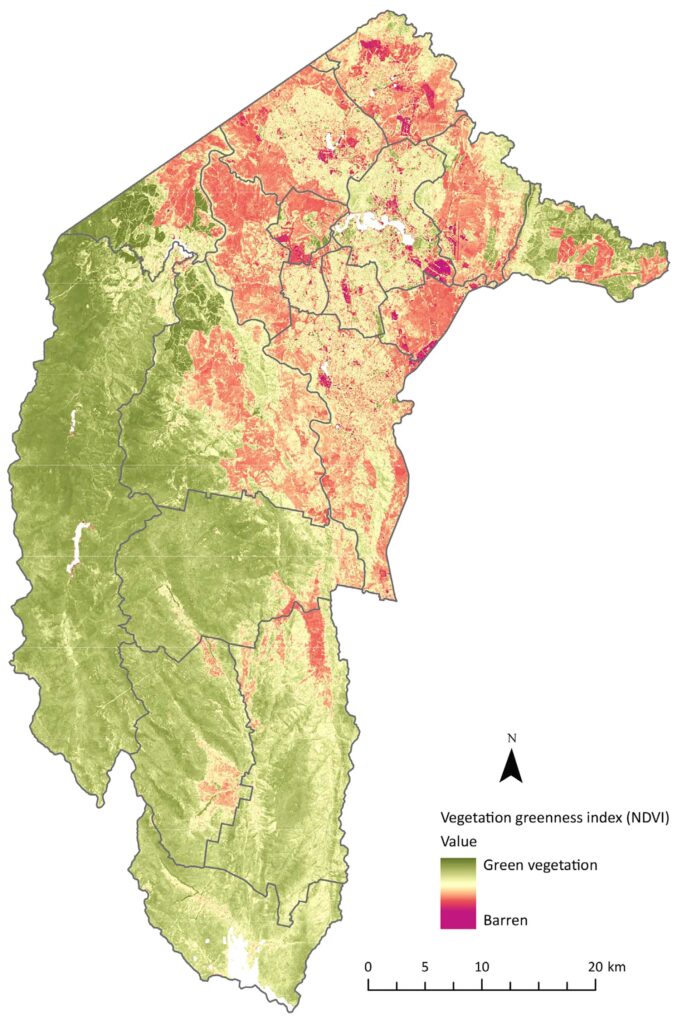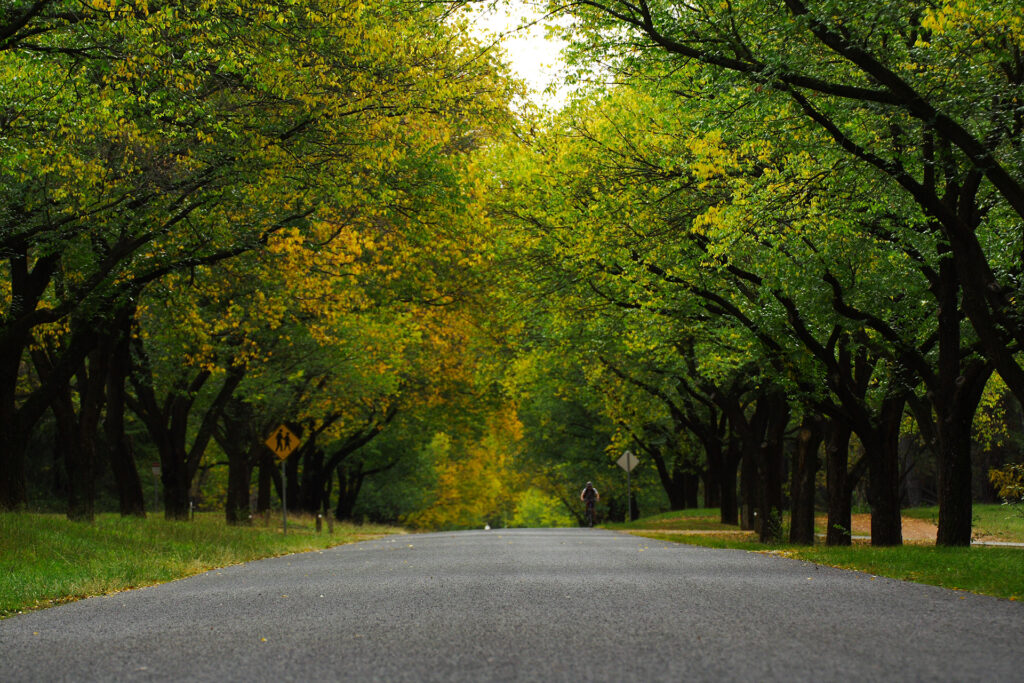
Natural areas in a city provide a range of benefits – not just from the trees, shrubs and grass located in urban areas, but also from the insects, birds and mammals that live in them. Nature improves people’s physical and mental health, provides protection from the heat of summer (likely to be worsened by climate change), and helps conservation of threatened species. Nature in cities also helps connect people with local Indigenous culture and history.
The health benefits resulting from exposure to green space in cities include reducing the risk of heart disease, type 2 diabetes, early death, stress and high blood pressure. Urban green areas provide benefits for children, as more time outside improves health and learning.
The ACT’s public urban forest is worth $3.4 billion. Every year it provides $27 million in benefits.
The value of urban trees
Urban trees provide many benefits, including:
- spiritual and cultural wellbeing through links to the city’s Indigenous and non-Indigenous history
- recreation
- healthy land
- capturing carbon
- reducing heat, thanks to their shade and cooling effects
- reducing energy consumption
- providing habitat and pollination to increase biodiversityThe variety of all life and living processes in the environm More
- reducing dust, pollution, wind and UV radiation
- managing stormwater run-off
- providing tourism opportunities
- increasing property value and helping city businesses
- health benefits
Reducing urban heat
Urban ‘heat islands’ can form due to changes in surface cover. Denser, man-made materials and darker surfaces absorb more heat than natural landscapes. During the day, buildings, roads and paved surfaces absorb the Sun’s energy. These surfaces release the heat slowly at night, making the city an ‘island’ of heat compared with the cooler surrounding region. In summer, Canberra’s urban areas can be 8 °C warmer than the surrounding rural area.
Trees can reduce the temperature at ground level – the greater the tree canopy, the lower the temperature. But a lack of vegetation often means high temperatures.
Canberra’s industrial areas are the hottest because they have extensive paved surfaces and only 8.5 per cent tree cover. Our parks and recreation areas have the lowest temperature thanks to lots of tree cover (nearly 30 per cent).
The temperature differences between areas with low and high tree cover could have severe human health implications when it is very hot. Canberra needs more trees to help its inhabitants adapt to climate change.
